#alexandra petrovna
Explore tagged Tumblr posts
Text
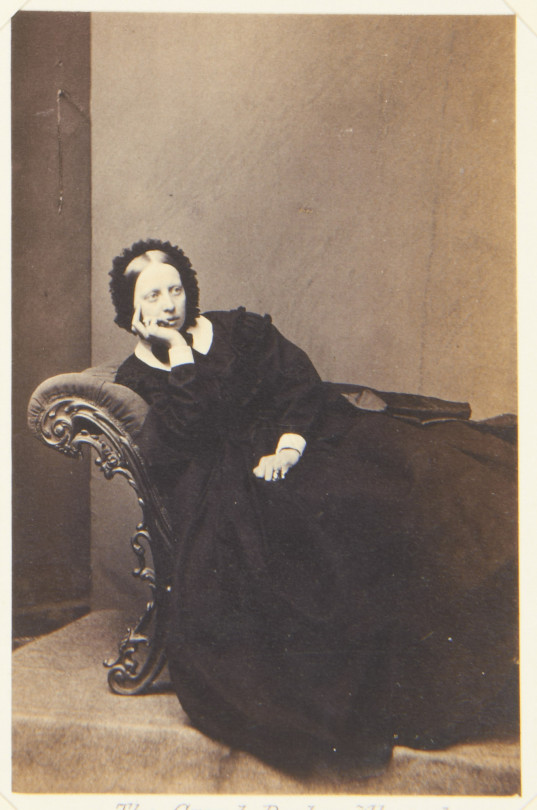
Photograph of Grand Duchess Alexandra, lying on a chaise-longue, facing towards the camera. She rests her head on her right hand and gazes to the right. She wears a dark coloured dress and dark coloured hair covering.
Source
#alexandra petrovna#the royal collection#Alexandra of Oldenburg#house of romanov#imperial russia#long live the queue
18 notes
·
View notes
Text

“As Princess of Oldenburg, she was invited to Tsarskoe Selo… Young, shy, she knew almost no one there… It was rumored that she was being tipped as a bride for Grand Duke Nicholas Nikolaevich. Although I loved him very much, I was annoyed with him that, although he was sitting next to her, he paid so little attention to her throughout the whole evening: he would speak to her occasionally but he was flirting with the maid of honor. I felt sorry for the princess; she apparently liked the Grand Duke.”
- M.A. Patkul on the future Grand Duchess Alexandra Petrovna and her husband-to-be, Grand Duke Nicholas Nikolaevich (the Elder) of Russia. The marriage would be very unhappy.
My translation from https://vk.com/wall-35562918_5974
#grand duchess alexandra petrovna#grand duke nicholas nikolaevich the elder#oldenburg#romanov#russia#m.a. patkul#quotes
54 notes
·
View notes
Text
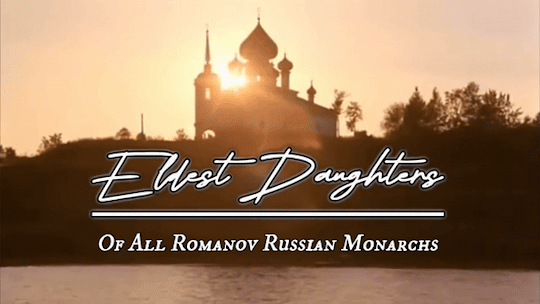

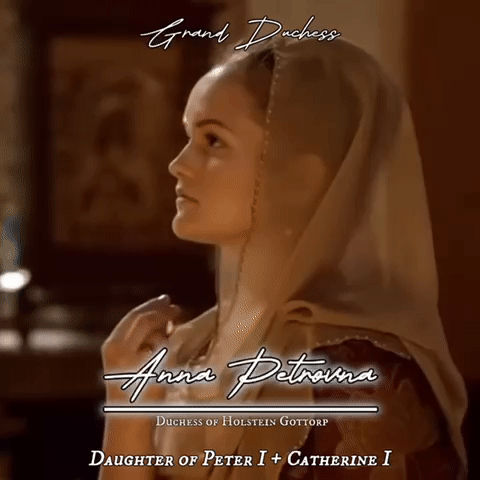
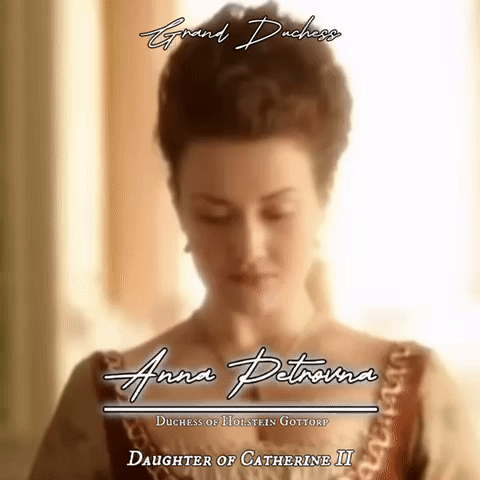
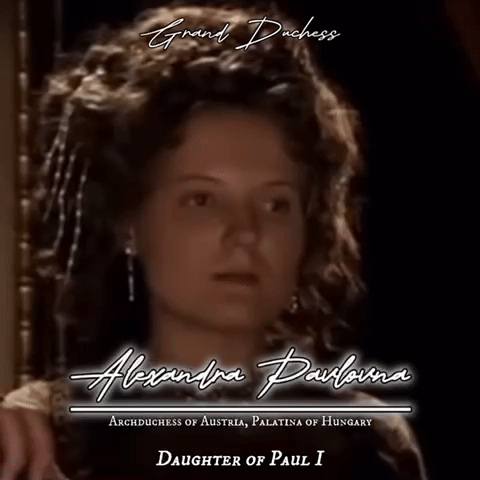

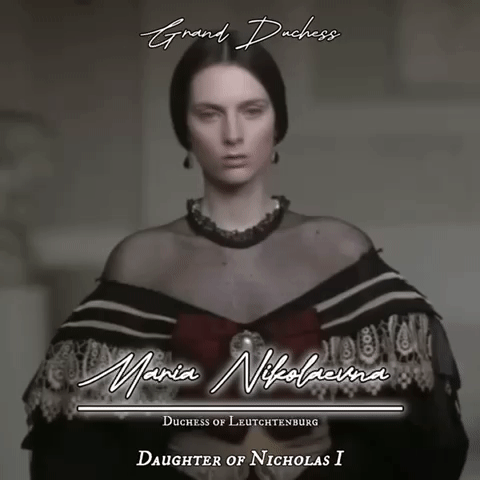
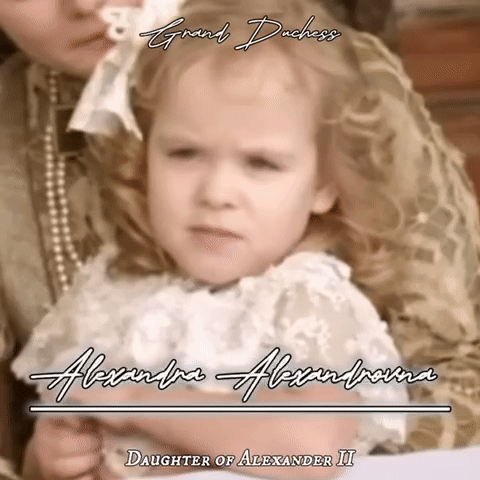
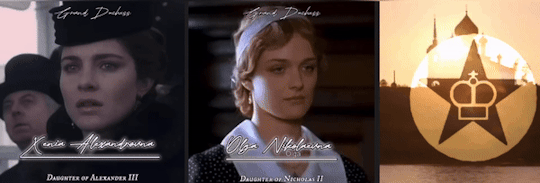
Eldest daughters of all Romanov Monarchs of Russia gifset
❦
#my first gifset!#it turned out okay but I will keep improving#Romanovs#Romanov#russian imperial family#Russian history#irina mikailovna#tsar mikhail I#evdokia alexeivna#tsar Alexei I#Catherine ivanovna#tsar Ivan v#Anna petrovna#Peter the great#Catherine I#Catherine the great#Alexandra pavlovna#tsar Paul I#maria alexandrovna#tsar Alexander i#Maria nikolaevna#tsar Nicholas I#Alexandra Alexandrovna#tsar Alexander III#xenia alexandrovna#tsar Alexander ii#olga nikolaevna#tsar nicholas ii#my edit#made by me
65 notes
·
View notes
Text

Emperor Nicholas I (1796 - 1855) and Empress Alexandra Feodorovna (1798 -1860 - nee Princess Friederike Luise Charlotte Wilhelmine of Prussia
Nicholas I, the Iron Tzar, and his sons
This couple was the first “Nicholas and Alexandra” in the Romanov Dynasty. They were Nicholas II's great grant-parents.
It was said that he was the best-looking man in Europe. She was tall and fair and enjoyed jewels, gowns, and balls. They loved each other, and their union was not unhappy, but he did not remain faithful to her (after he died, his last mistress was employed as Alexandra’s lectrice, and they became friends.) Nicholas and Alexandra had seven children, four sons, and three daughters. Those four sons would ensure that the generation of Romanovs following them would not want for male heirs. As a matter of fact, there would be too many Grand Dukes, making it necessary for his grandson, Alexander III, to change the Pauline laws, re-defining who would be considered a Grand Duke or Duchess, among other things (only grandsons/grandaughters of a Tzar would be Grand Duke/Duchesses; great-grandsons and so on would be Princes and Princesses of the blood).

Nicholas I with his four sons: Tsarevich Alexander Nikolayevich (1818 - 1881 - future Alexander II), Grand Duke Konstantin Nikolayevich (1827 - 1882), Grand Duke Nikolay Nikolayevich (1831 - 1891), and Grand Duke Mikhail Nikolayevich (1832- 1909.)
According to the literature, Nicholas raised his two elder sons very strictly but had more of a paternal relationship with the younger two. His priority was to bring them up so that they were true soldiers and so that when Alexander inherited the throne, the other three would help and support him. And they did. Nicholas I adored his daughters and was devastated when his youngest daughter Alexandra (better known as Adini), died. (His daughters would be discussed in another post.)
Below are the sons of Nicholas I and their spouses:
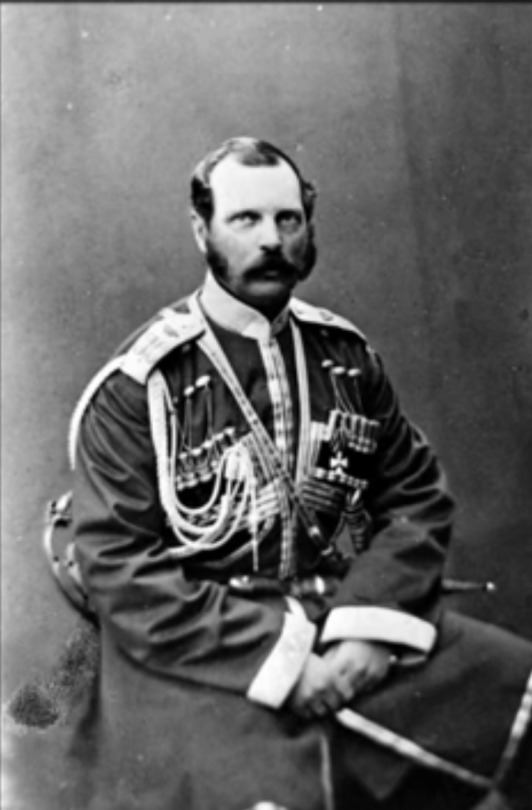

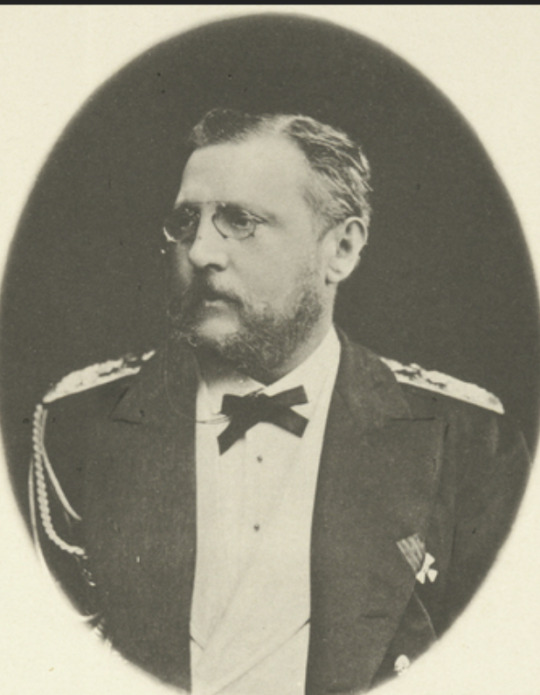
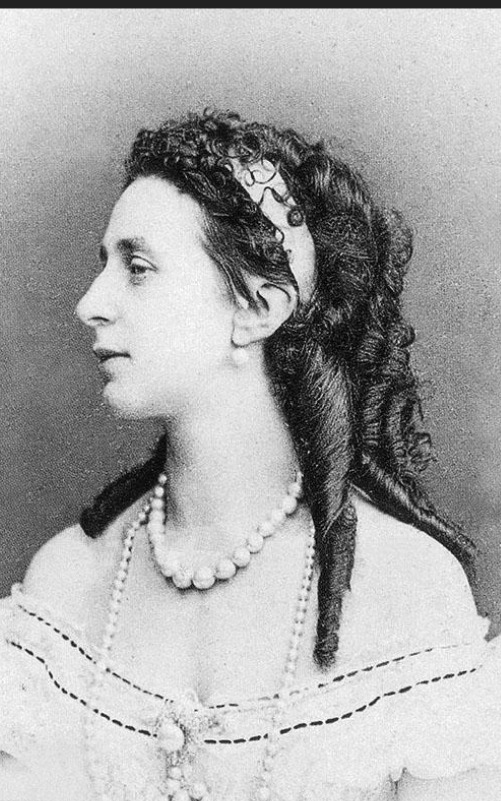




1. Emperor Alexander II and his first wife Empress Maria Alexandrovna (born Princess Wilhemine Marie of Hesse); Issue listed below (Only legitimate issue surviving to adulthood listed; not in birth order)
Grand Duchess Marie
Grand Duke Nicholas Alexandrovich
Alexander III
Grand Duke Vladimir
Grand Duke Alexei
Grand Duke Sergei
Grand Duke Pavel
2. Grand Duke Konstantin Nikolayevich and Grand Duchess Alexandra Iosifovna (Princess Alexandra of Saxe Altenburg); Issue listed below (Only legitimate issue surviving to adulthood listed; not in birth order) - They would be known as the "Konstantinovichi"
Grand Duke Nicholas
Grand Duke Konstantin
Grand Duke Dmitry
Grand Duke Vyacheslav
Grand Duchess Olga
Grand Duchess Vera
3. Grand Duke Nikolay Nikolayevich (the Elder) and Grand Duchess Alexandra Petrovna of Russia, born Duchess Alexandra Frederica Wilhelmina of Oldenburg. Issue listed below (Only legitimate issue surviving to adulthood listed; not in birth order); Known as the "Nikolayvichi”
Grand Duke Nicholas Nikolayevich
Grand Duke Peter Nikolayevich
4. Grand Duke Mikhail Nikolayevich and Grand Duchess Olga Feodorovna (nee Princess Cecilie of Baden) Issue listed below (Only legitimate issue surviving to adulthood listed; not in birth order) They were known as the "Mikhailovichi" (although they preferred to be called the "Michels;" the family called them the "Wild Caucasians" because they grew up in the Caucus and had strong opinions that they voiced loudly)
Grand Duchess Anastasia Mikhailovna
Grand Duke Nicholas Mikhailovich
Grand Duke Mikhail
Grand Duke George
Grand Duke Alexander
Grand Duke Sergei
Grand Duke Alexei
The children and grandchildren of these couples would be directly involved in one way or the other in the Great War, the Russian Revolution, the Civil War in Russia, and the overthrow of the monarchy and the Romanov Dynasty. Some would lose their lives, others would lose children, brothers, and spouses, and all would lose their country, status, and privileges.
#russian history#romanov dynasty#imperial russia#Emperor Nicholas I#Emperor Alexander II#Grand Duke Konstantin Nikolayevich#Grand Duchess Alexandra Iosifovna#Grand Duke Nikolay Nikolayevich#Grand Duchess Alexandra Petrovna of Russia#Grand Duke Mikhail Nikolaevich#Grand Duchess Olga Feodorovna#vintage photography
95 notes
·
View notes
Photo
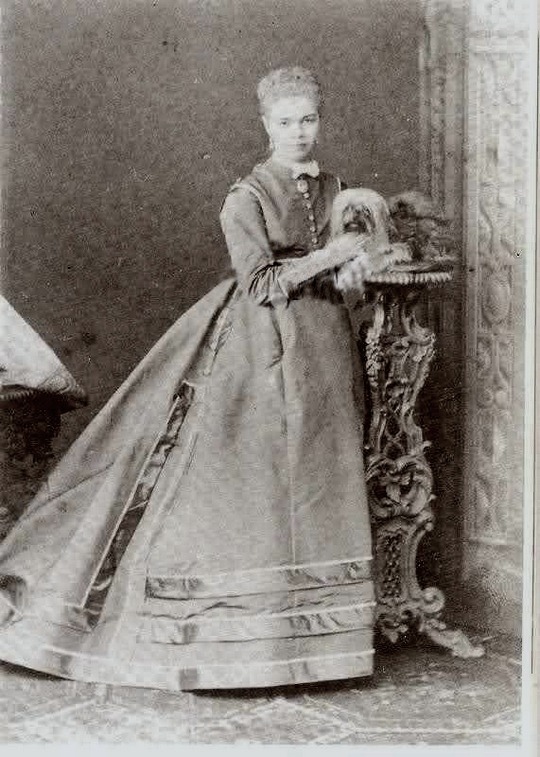
Ekaterina Gavrilovna Chislova (21st September 1846 - 13th December 1889).
Born in St. Petersburg, Ekaterina was a dancer with the Imperial Ballet and celebrated great success with Polish mazurka, in which she was often pertnered with the famous Felix Kschessinsky (who in his turn was the father ot Matilda, the first and only mistress of the last Tsar.) Some time in the mid 1860s she attracted the attention of Grand Duke Nicholas Nikolaevich (the Elder), who, inspite of being married, fell in love with her and made her his mistress.The affair became a public knowledge and caused great pain and humiliation to the Grand Duke´s wife, Alexandra Petrovna, especially after Nicholas installed Ekaterina in a house siatuated directly across from his own palace. Whenever she wanted her lover to visit, Ekaterina devised a signal to summon him by lighting two candles on a windowsill, that he could see from the window of his study. he rarely missed her summons.
As the years passed, Ekaterina, who had given up her career as a dancer, wanted Nicholas to provide for her and their children (2 sons and 3 daughters), which he did by arranging a change of class into the gentry, with the surname Nikolaev for theit offspring in 1882. He also openly hoped, having failed to obtain a divorce, his wife would soon die and he would be free to contract a morganatic marriage with Ekaterina, however his plans were dashed when she died, suddenly, suring a trip to the Crimea. He himself died two years later, while Alexandra Petrovna survived them both.
Ekaterina was buried in Petersburg in the monastery of St Sergei, under the surname of Nikolaev.
61 notes
·
View notes
Text
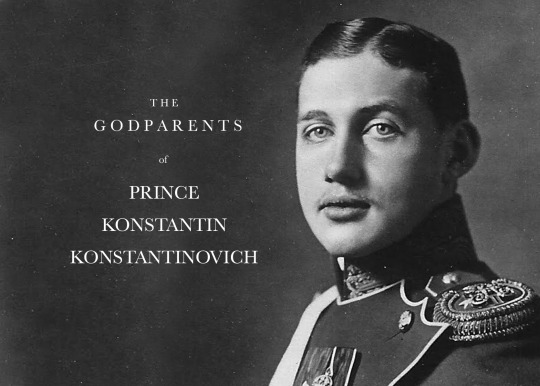
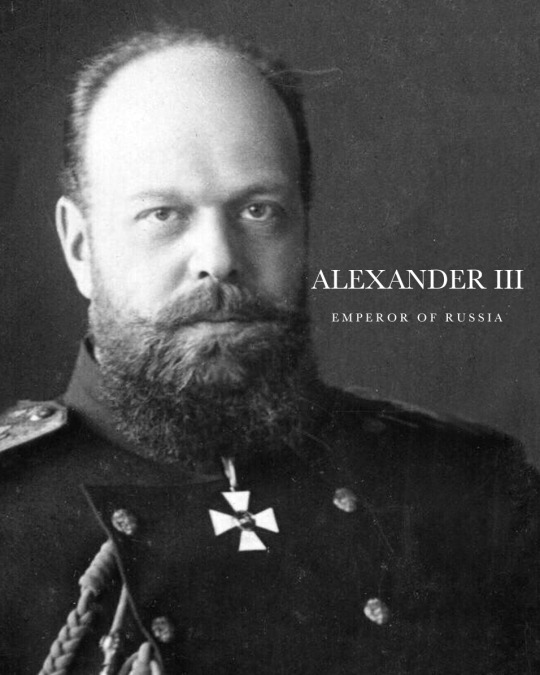




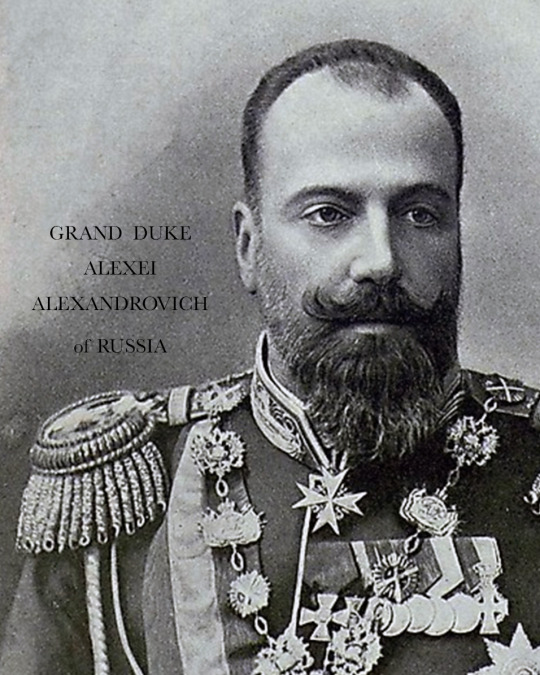

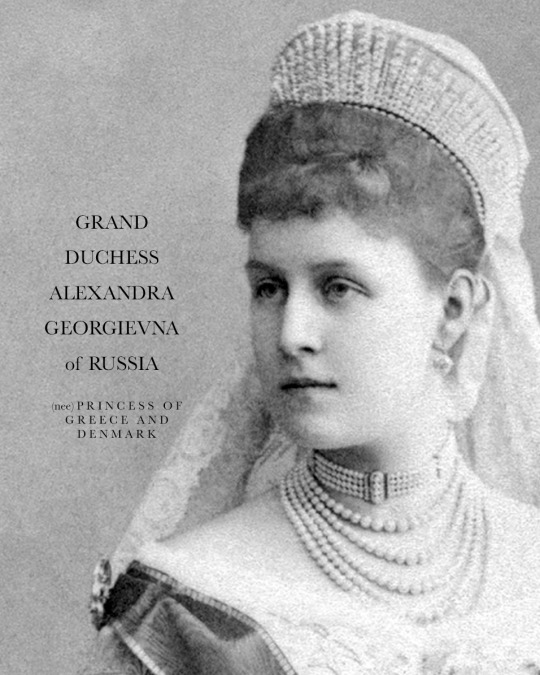
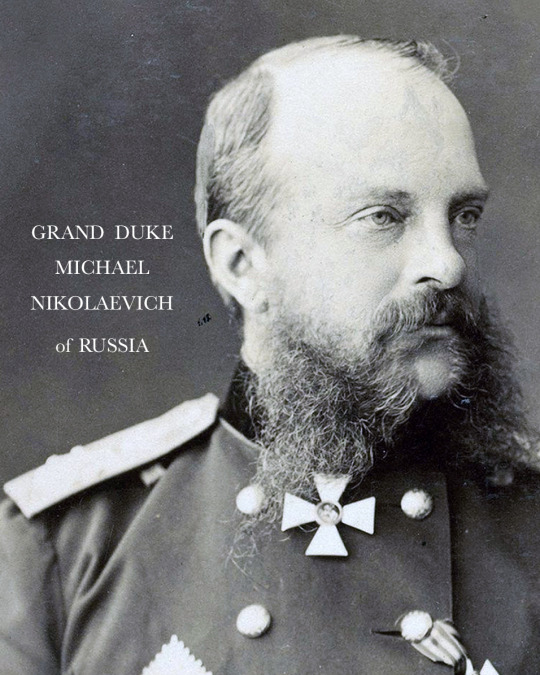



GODPARENTS OF PRINCE KONSTANTIN KONSTANTINOVICH
Prince Konstantin Konstantinovich was born on 1 January 1891 in Saint Petersburg, Imperial Russia. He was the third son and fourth child of Grand Duke Konstantin Konstantinovich of Russia and his German-born wife Grand Duchess Elizabeth Mavrikievna. Konstantin was christened on 3 January at 2 in the afternoon at Marble Palace Church, St. Petersburg, by the Confessor of Their Majesties. His godparents were:
ALEXANDER III, EMPEROR OF RUSSIA - his father’s first cousin was named as one of his many godparents. He was highly reactionary in domestic affairs and reversed some of the liberal reforms of his father, Alexander II. He was most likely present at his young cousin’s christening.
GRAND DUKE KONSTANTIN NIKOLAEVICH OF RUSSIA - his paternal grandfather and namesake was one of his numerous godparents. He was the Viceroy of Poland from 1862 to 1863. His real influence on internal affairs after 1868 was insignificant. He was reportedly absent at his grandson's christening, due to his ill health.
CHARLES ALEXANDER, GRAND DUKE OF SAXE-WEIMAR-EISENACH - his parents' distant cousin (as a grandson of Emperor Paul I of Russia) was also named as the young Konstantin's godparent. He was absent at the prince's christening. He was the penultimate ruler of Saxe-Weimar-Eisenach, from 1853 until his death in 1901.
QUEEN MARIE OF HANOVER - his great-aunt, the last Queen consort of Hanover, was amongst his numerous godparents. She was absent at his christening.
ELISABETH, GRAND DUCHESS OF OLDENBURG - another of his great-aunt named as his godmother. Elisabeth, upon her marriage to the Grand Duke of Oldenburg used the funds given to her by her father to set up the Elisabeth Foundation, which still exists today. Like her sister Queen Marie, she was absent at her great-nephew's christening.
GRAND DUKE ALEXEI ALEXANDROVICH OF RUSSIA - his father's illustrious first cousin was named as the prince's godfather. Chosen for a naval career, Alexei started his military training at an early age. By the age of 20 he had been appointed lieutenant of the Imperial Russian Navy, eventually becoming general-admiral.
GRAND DUCHESS ALEXANDRA PETROVNA OF RUSSIA - his great-aunt, the wife of Grand Duke Nicholas Nikolaevich, was another of his godmothers.A plain, and serious woman, her marriage to Grand Duke Nicholas was an unhappy one. Nevertheless, she would enjoy and maintain a good relationship with a few of her nephews including Emperor Alexander III and Grand Duke Konstantin Konstantinovich, who were sympathetic to her.
GRAND DUCHESS ALEXANDRA GEORGIEVNA OF RUSSIA - his paternal first cousin, the eldest daughter of King George I and Queen Olga, had been present and named as a godparent of Prince Konstantin, who was merely nineteen years her senior. In 1889, she married Grand Duke Paul Alexandrovich, the youngest brother of Emperor Alexander III.
GRAND DUKE MICHAEL NIKOLAEVICH OF RUSSIA - his great-uncle was also listed as his godparent, and had been present at the christening. A soldier for most of his adult life, he enjoyed a favourable relationship with the three last Emperors of Russia - his brother Alexander II; nephew Alexander III; and great-nephew Nicholas II.
GRAND DUKE PETER NIKOLAEVICH OF RUSSIA - his father's first cousin was another of his many godparents. He was the younger son of Grand Duke Nicholas Nikolaevich and his wife grand Duchess Alexandra Petrovna (also named as a godparent of Prince Konstantin, listed above).
PRINCESS AUGUSTA OF SAXE-MEININGEN - his maternal grandmother was also named as his godmother. In 1862, she married Prince Moritz of Saxe-Altenburg, and bore him five children.
PRINCESS LOUISE CHARLOTTE OF SAXE-ALTENBURG - his maternal aunt, the youngest sister of Grand Duchess Elizabeth Mavrikievna was amongst his numerous godparents. Both Louise Charlotte and her mother Augusta were absent at Konstantin's christening.
Source
48 notes
·
View notes
Text
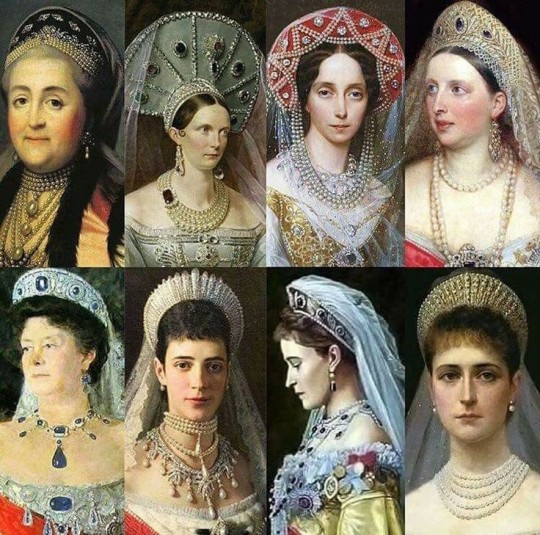
Ladies of the House of Romanov, second row (left to right): Grand Duchess Maria Pavlovna, Empress Maria Feodorovna (Alexander III), Grand Duchess Elizabeth Feodorovna, Empress Alexandra Feodorovna (Nicholas II). First row (left to right): Empress Catherine the Great, Empress Alexandra Feodorovna (Nicholas I), Empress Maria Alexandrovna (Alexander II), and Grand Duchess Alexandra Petrovna.
#romanov family#house romanov#maria pavlova#maria feodorovna#elizabeth feodorovna#catherine the great#alexandra feodorovna#maria alexandrovna#alexander iii#nicholas ii#nicholas i#alexander ii
44 notes
·
View notes
Text
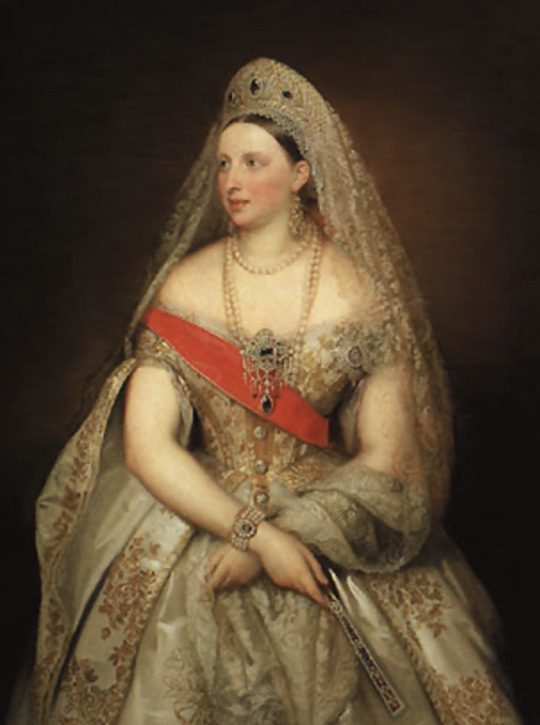
Duchess Alexandra Petrovna of Oldenburg, Carl Timoleon von Neff. n.d.
#aesthetic#art#art history#fashion#historical fashion#victorian#historical art#victorian aesthetic#women in art#women#Russia#russian court dress#Russian royals#Oldenburg royals#Russian royalty#Russian nobility#royals#royalty#royal aesthetic#kokoshnik#kokoshnik tiara#Romanovs#Romanov
32 notes
·
View notes
Text
Women of Imperial Russia: Ages at First Marriage
I have only included women whose birth dates and dates of marriage are known within at least 1-2 years, therefore, this is not a comprehensive list. This data set ends with the Revolution of 1917.
Eudoxia Lopukhina, wife of Peter I; age 20 when she married Peter in 1689 CE
Catherine I of Russia, wife of Peter I; age 18 when she married Johan Cruse in 1702 CE
Anna of Russia, daughter of Ivan V; age 17 when she married Frederick William Duke of Courland and Semigallia in 1710 CE
Anna Petrovna, daughter of Peter I; age 17 when she married Charles Frederick I, Duke of Holstein-Gottorp, in 1725 CE
Catherine II, wife of Peter III; age 16 when she married Peter in 1745 CE
Natalia Alexeievna, wife of Paul I; age 17 when she married Paul in 1773 CE
Maria Feodorovna, wife of Paul I; age 17 when she married Paul in 1776 CE
Elizabeth Alexeivna, wife of Alexander I; age 14 when she married Alexander in 1793 CE
Anna Feodorovna, wife of Konstantin Pavlovich; age 15 when she married Konstantin in 1796 CE
Alexandra Pavlovna, daughter of Paul I; age 16 when she married Archduke Joseph of Austria in 1799 CE
Elena Pavlovna, daughter of Paul I; age 15 when she married Frederick Louis, Duke of Mecklenburg-Schwerin in 1799 CE
Maria Pavlovna, daughter of Paul I; age 18 when she married Charles Frederick, Grand Duke of Saxe-Weimar-Eisenach in 1804 CE
Catherine Pavlovna, daughter of Paul I; age 21 when she married Duke George of Oldenburg in 1809 CE
Anna Pavlovna, daughter of Paul I; age 21 when she married William II of the Netherlands in 1816 CE
Alexandra Feodorovna, wife of Nicholas I; age 19 when she married Nicholas in 1817 CE
Joanna Grudzinska, wife of Konstantin Pavlovich; age 29 when she married Konstantin in 1820 CE
Elena Pavlovna, wife of Mikhail Pavlovich; age 17 when she married Mikhail in 1824 CE
Maria Nikolaevna, daughter of Nicholas I; age 20 when she married Maximilian de Beauharnais, Duke of Leuchtenberg, in 1839 CE
Maria Alexandrovna, wife of Alexander II; age 17 when she married Alexander in 1841 CE
Elizaveta Mikhailovna, daughter of Mikhail Pavlovich; age 17 when she married Adolphe, Grand Duke of Luxembourg, in 1844 CE
Alexandra Nikolaevna, daughter of Nicholas I; age 19 when she married Prince Frederick-William of Hesse-Kassel, in 1844 CE
Olga Nikolaevna, daughter of Nicholas I; age 24 when she married Charles I of Wurttemberg, in 1846 CE
Alexandra Iosifovna, wife of Konstantin Nikolaevich; age 18 when she married Konstantin in 1848 CE
Catherine Mikhailovna, daughter of Mikhail Pavlovich; age 24 when she married Duke Georg August of Mecklenburg-Strelitz, in 1851 CE
Alexandra Petrovna, wife of Nicholas Nikolaevich the Elder; age 18 when she married Nicholas in 1856 CE
Olga Feodorovna, wife of Michael Nikolaevich; age 18 when she married Michael in 1857 CE
Maria Feodorovna, wife of Alexander III; age 19 when she married Alexander III in 1866 CE
Olga Konstantinovna, daughter of Konstantin Nikolaevich; age 16 when she married George I of Greece in 1867 CE
Vera Konstantinovna, daughter of Konstantin Nikolaevich; age 20 when she married Duke Eugen of Wurttemberg in 1874 CE
Maria Pavlovna, wife of Vladimir Alexandrovich; age 20 when she married Vladimir in 1874 CE
Maria Alexandrovna, daughter of Alexander II; age 19 when she married Alfred, Duke of Edinburgh, in 1874 CE
Anastasia Mikhailovna, daughter of Michael Nikolaevich; age 19 when she married Friedrich Franz III, Duke of Mecklenburg-Schwerin in 1879 CE
Nadezhada Alexandrovna Dreyer, wife of Nicholas Konstantinovich; age 21 when she married Nicholas in 1882 CE
Elizabeth Feodorovna, wife of Sergei Alexandrovich; age 20 when she married Sergei in 1884 CE
Olga Valerianovna Paley, wife of Paul Alexandrovich; age 19 when she married Erich von Pistolhkors in 1884 CE
Elizabeth Mavrikievna, wife of Konstantin Konstantinovich; age 19 when she married Konstantin in 1885 CE
Anastasia of Montenegro, wife of Nicholas Nikolaevich the Younger; age 21 when she married George Maximilianovich, Duke of Leuchtenberg in 1889 CE
Milica of Montenegro, wife of Peter Nikolaevich; age 23 when she married Peter in 1889 CE
Alexandra of Greece and Denmark, wife of Paul Alexandrovich; age 19 when she married Paul in 1889 CE
Sophie Nikolaievna, wife of Michael Mikhailovich; age 23 when she married Michael in 1891 CE
Victoria Feodorovna, wife of Kirill Vladimirovich; age 18 when she married Ernest Louis, Grand Duke of Hesse, in 1894 CE
Xenia Alexandrovna, wife of Alexander Mikhailovich; age 19 when she married Alexander in 1894 CE
Alexandra Feodorovna, wife of Nicholas II; age 22 when she married Nicholas in 1894 CE
Olga Alexandrovna, daughter of Alexander II; age 18 when she married Count George-Nicholas von Merenberg in 1985 CE
Maria of Greece and Denmark, wife of George Mikhailovich; age 24 when she married George in 1900 CE
Alexandra von Zarnekau, wife of George Alexandrovich; age 16 when she married George in 1900 CE
Catherine Alexandrovna, daughter of Alexander II; age 23 when she married Alexander Baryatinksy in 1901 CE
Olga Alexandrovna, daughter of Alexander III; age 19 when she married Duke Peter Alexandrovich of Oldenburg
Elena Vladimirovna, daughter of Vladimir Alexandrovich; age 20 when she married Prince Nicholas of Greece and Denmark in 1902 CE
Natalia Brasova, wife of Michael Alexandrovich; age 22 when she married Sergei Mamontov in 1902 CE
Elisabetta di Sasso Ruffo, wife of Andrei Alexandrovich; age 31 when she married Alexander Alexandrovitch Frederici in 1907 CE
Maria Pavlovna, daughter of Paul Alexandrovich; age 18 when she married Prince Wilhelm of Sweden in 1908 CE
Helen of Serbia, wife of Ioann Konstantinovich; age 27 when she married Ioann in 1911 CE
Tatiana Konstantinovna, daughter of Konstantin Konstantinovich; age 21 when she married Konstantine Bagration of Mukhrani, in 1911 CE
Irina Alexandrovna, daughter of Alexander Mikhailovich; age 19 when she married Felix Felixovich Yusupov in 1914 CE
Nadejda Mikhailovna, daughter of Michael Mikhailovna; age 20 when she married George Mountbatten in 1916 CE
Antonina Rafailovna Nesterovkaya, wife of Gabriel Konstantinovich; age 27 when she married Gabriel in 1917 CE
Nadejda Petrovna, wife of Nicholas Orlov; age 19 when she married Nicholas in 1917 CE
Anastasia Mikhailovna, daughter of Michael Mikhailovna; age 25 when she married Sir Harold Wernher in 1917 CE
59 women; average age at first marriage was 20 years old. The oldest bride was 31 at her first marriage; the youngest was 14.
19 notes
·
View notes
Note
Grand Duchess Alexandra Petrovna was regarded as ugly??
omg thats so mean and sad
It really was. In fact, after an encounter with her brother-in-law Alexander II in which Alexandra complained about her husband’s affair with his mistress (and rightly so) he was said to have told her; ”Your husband is in the prime of his life, and he needs a woman with whom he can be in love. And look at yourself! See even how you dress! No man would be attracted.”
She lived a sad and bitter life and I always feel a pang in my chest when I come across her in Romanov biographies.
16 notes
·
View notes
Text
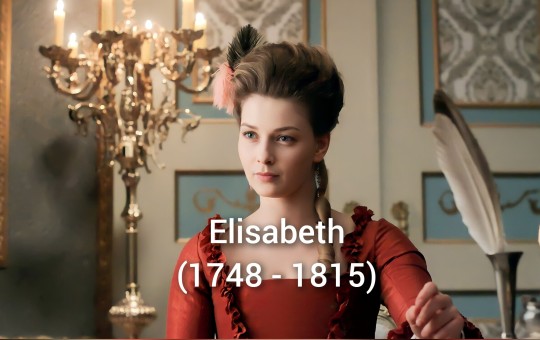
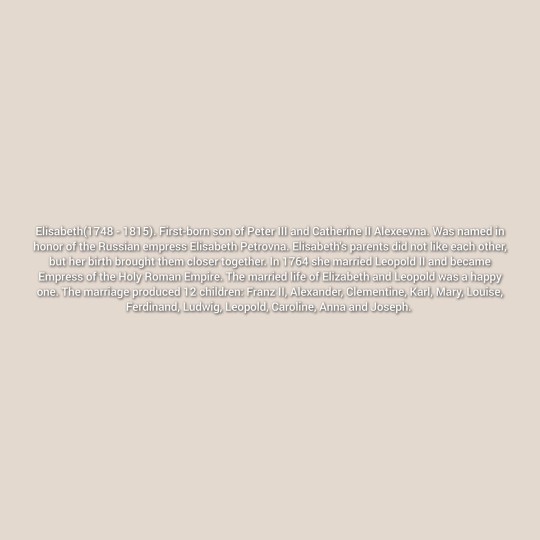


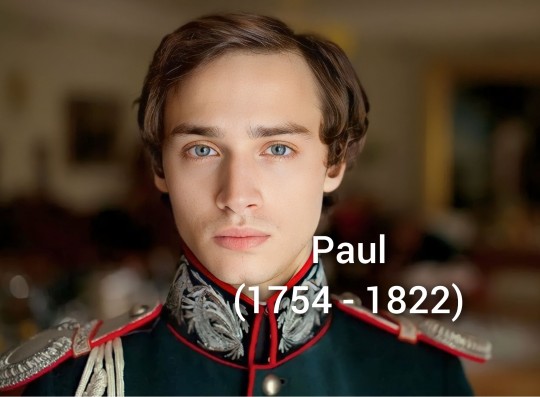
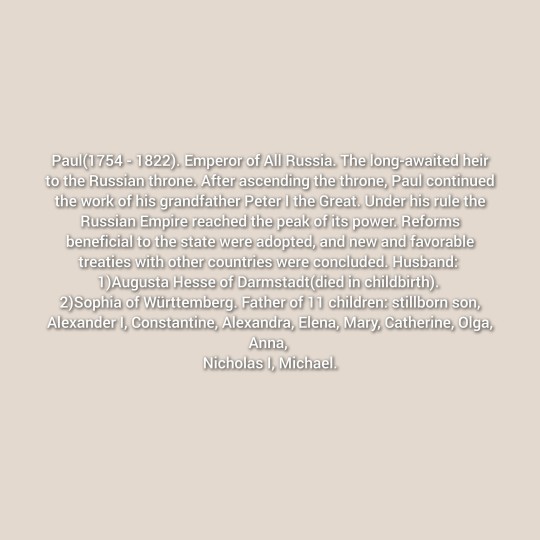

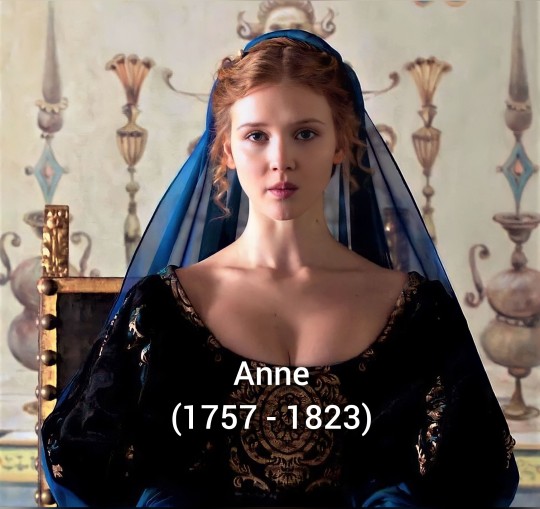
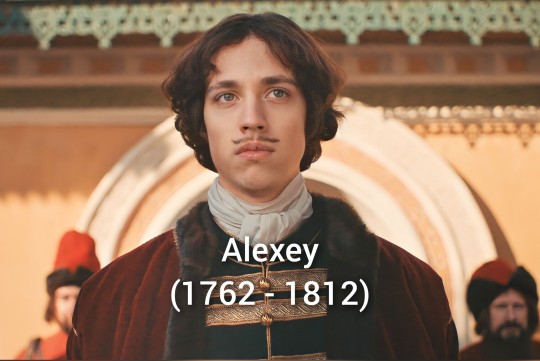

The Romanovs AU: Peter III(1728 - 1791) and Catherine II(1729 - 1792).
In 1745, the Prussian princess Sophia Augusta Frederica of Anhalt-Zerbst became the wife of the heir to the Russian throne, Peter, and converted to Orthodoxy. After adopting the Provo-Slavism, she ceased to be a Prussian princess and became the Russian Tsarevna Catherine Elekseevna. Peter did not love his wife, but after the birth of their eldest daughter he looked at her differently, and the birth of a son finally brought the couple closer together. In 1762 the Russian Empress Elisabeth died and Peter became Emperor. He reigned in the Russian Empire together with his wife. Almost 30 years they ruled in Russia, but in 1791 Peter died suddenly. For Catherine the death of her husband was a strong blow, she began to lead a reclusive life and did not want to see anyone except her eldest son, as he was similar to her late husband. A year later, Catherine herself died of a heart attack.
Children of Peter III and Catherine:
Elisabeth(1748 - 1815). First-born son of Peter III and Catherine II Alexeevna. Was named in honor of the Russian empress Elisabeth Petrovna. Elisabeth's parents did not like each other, but her birth brought them closer together. In 1764 she married Leopold II and became Empress of the Holy Roman Empire. The married life of Elizabeth and Leopold was a happy one. The marriage produced 12 children: Franz II, Alexander, Clementine, Karl, Mary, Louise, Ferdinand, Ludwig, Leopold, Caroline, Anna and Joseph.
Mary(1750 - 1825). Duchess of Hesse. In 1770 married Ludwig I of Hesse. She was loved not only by her husband and his relatives, but also by her subjects. Mother of 8 children: Ludwig II, Louise, George, Friedrich, Emil, Gustav, Charles, Henrietta.
Paul(1754 - 1822). Emperor of All Russia. The long-awaited heir to the Russian throne. After ascending the throne, Paul continued the work of his grandfather Peter I the Great. Under his rule the Russian Empire reached the peak of its power. Reforms beneficial to the state were adopted, and new and favorable treaties with other countries were concluded. Husband:
1)Augusta Hesse of Darmstadt(died in childbirth).
2)Sophia of Württemberg.
Father of 11 children: stillborn son, Alexander I, Constantine, Alexandra, Elena, Mary, Catherine, Olga, Anna, Nicholas I, Michael.
Anne(1757 - 1823). Queen of France, wife of Louis XVI and mother of 4 children: Louis, Mary, Charles, Sophia. She received her name in honor of her paternal grandmother. Was the favorite sister of Russian Emperor Paul. In 1789 the Great French Revolution began, and in 1791 Anne and her children fled to Russia. Two years later she learned of her husband's execution. Anne and her children never returned to France.
Alexey(1762 - 1812). The last child of Peter III and Catherine II Elekseevna. General Fieldzeichmeister. He was married to Louis XVI's sister Elizabeth. Father of 3 children: Mary, Catherine, Anton.
Романовы AU: Пётр III(1728 - 1791 ) и Екатерина II(1729 - 1792).
В 1745 году прусская принцесса София Августа Фредерика Ангальт-Цербстская стала женой наследника русского престола Петра и приняла провославие. После принятия провославия она перестала быть прусской принцессой и стала русской царевной Екатериной Елексеевной. Пётр не любил свою жену, но после рождения их старшей дочери он по другому посмотрел на нее, а рождение сына окончательно сблизило супругов. В 1762 году умерла российская императрица Елизавета Петровна и Пётр становится императором. Царствовал в российской империи совместно с женой. Почти 30 лет они правили Россией, но в 1791 году Пётр скоропостижно скончался. Для Екатерины смерть мужа стала сильным ударом, она начала вести затворнический образ жизни и никого не хотела видеть кроме старшего сына, так как он был похож на её покойного мужа. А через год не стало и самой Екатерины, она умерла от сердечного приступа.
Дети Петра III и Екатерины II:
Елизавета(1748 - 1815). Первенец Петра III и Екатерины II Алексеевны. Была названа в честь российской императрицы Елизаветы Петровны. Родители Елизаветы не любили друг друга, но её рождение их сблизило. В 1764 году вышла замуж за Леопольда II и стала императрицей Священной Римской империи. Супружеская жизнь Елизаветы и Леопольда была счастливой. В браке родилось 12 детей: Франц II, Александр, Клементина, Карл, Мария, Луиза Фердинанд, Людвиг, Леопольд, Каролина, Анна и Иосиф.
Мария(1750 - 1825). ��ерцогиня Гессенская. В 1770 вышла замуж за Людвиг I Гессенского. Её любил не только муж и его родственники, но и подданные. Мать 8 детей: Людвиг II, Луиза, Георг, Фридрих, Эмиль, Густав, Карл, Генриетта.
Павел(1754 - 1822). Император Всероссийский. Долгожданный наследник русского престола. После восшествия на престол Павел продолжил дело своего деда Петра I Великого. При его правлении российская империя достигла пика своей могущественности. Были приняты полезные для государства реформы, а также заключены новые выгодные договора с другими странами. Муж:
1)Августы Гессен Дармштадтской(умерла при родах).
2)Софии Вюртембергской.
Отец 11 детей: мертворожденный сын, Александр I, Константин, Александра, Елена, Мария, Екатерина, Ольга, Анна, Николай I, Михаил.
Анна(1757 - 1823). Королева Франции, жена Людовика XVI и мать 4 детей: Людовик, Мария, Шарль, София. Получила свое имя в честь бабушки по отцовской линии. Была любимой сестрой российского императора Павла. В 1789 году началась Великая французская революция, а в 1791 Анна с детьми сбежала в Россию. Через 2 года она узнала о казни мужа. Анна и её дети во Францию больше не вернулись.
Алексей(1762 - 1812). Последний ребёнок Петра III и Екатерины II Елексеевны. Генерал фельдцейхмейстер. Был женат на сестре Людовика XVI Елизавете. Отец 3 детей: Мария, Екатерина, Антон.
#history#history au#romanovs#russian#russian imperial family#royal family#royalty#russians#romanov family#18th century#19th century#17th century#russian history#russia#russian royalty#royals#royal#house of romanov#House of romanovs
7 notes
·
View notes
Text

“He made me experience things I wouldn't wish on my worst enemy.”
— Grand Duchess Alexandra Petrovna of Russia on her husband, Grand Duke Nicholas Nikolaevich the Elder.
#grand duchess alexandra petrovna#grand duke nicholas nikolaevich the elder#oldenburg#romanov#russia#quotes
67 notes
·
View notes
Text

Key themes for the Jupiter Uranus conjunction on 20th-21st of April when it peaks. We are already seeing a lot of this. Time to re read my article of last year.
People born with Jupiter-Uranus conjunctions tend to approach life, with big, big expansive ideas, goals and come up easily with innovations, novelties, things others never thought of before, but who who can also be maddening, paradoxical, never easy to pin down. They are larger than life figures, capable of growing at top speed, and then losing it all or taking the more Zen-like viewpoint of success and failure, gain and loss and turning failures into triumphs and putting great spin on their achievements. • Rene Descartes • Helena Petrovna Blavatsky • Czarina Alexandra of Russia • Heinrich Himmler • Erich Fromm • Luis Bunuel • George Oppenheimer • Bertrand Russell • Alec Guinness • William Burroughs • Bob Dylan • Tim Berners Lee • Julie Christie • Rowan Atkinson • Vivienne Westwood • Steve Jobs • Nikolas Sarkozy • Edward Snowden • Mark David Chapman • Annie Lennox • Amy Winehouse and more..
so It's quite an impressive list…
But in November 2023 I wrote about Alec Guinness and his wonderful role as Mr. Dorrit who exemplifes the Jupiter-Uranus slightly vainglorious tendencies, along with Vivienne Westwood and Bob Dylan in my article on Jupiter Uranus and these major conjunctions are never ones to ignore they have such a humungous cultural effect and do change the zeitgeist.
1 note
·
View note
Text
Grand Duchess Alexandra Petrovna of Russia (1938 - 1900)
Her full name was Alexandra Frederica Wilhemina of Oldenburg, and she was a great-granddaughter of Pavel I of Russia. Her father was a nephew of Nicholas I, so she was very closely related to the Romanovs. Alexandra was deeply religious, very interested in Medicine, and heavily involved in charity. She did not care much about glamour or social activities.

Shortly after her debut, she was pushed into a marriage with Grand Duke Nicholas Nikolaievich, the third son of Emperor Nicholas I. Nicholas was a notorious womanizer. A contemporary describes him as a man with few redeeming qualities and whose only talent seemed to be that he danced well.
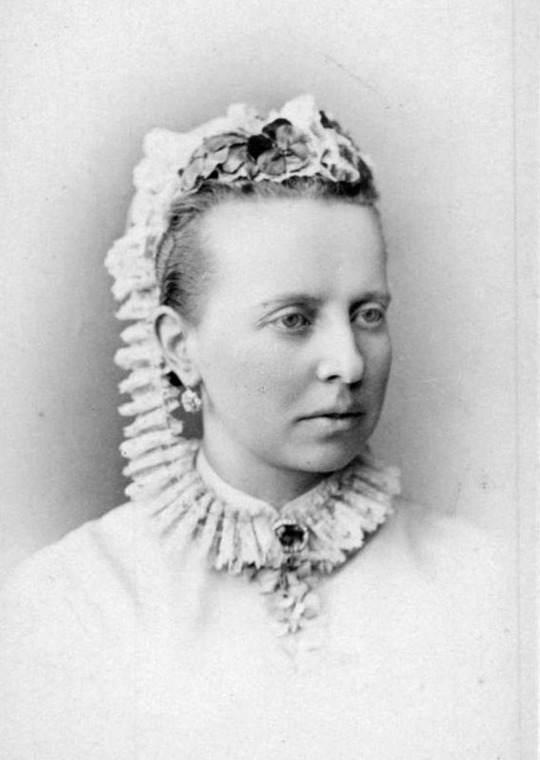

The Russian Imperial Family had hoped to reform the wayward Grand Duke through the marriage to the pious Alexandra. What they did was condemn Alexandra to hell. Although the first ten years of the marriage were quiet, and the couple had two children, soon Grand Duke Nicholas started giving signs of boredom with Alexandra’s continued and increasing interest in religion, charity and medicine. He established a second household with his Mistress, with whom he had 5 children. He wanted to marry his mistress and accused Alexandra of adultery with her confessor (doubtful) so that he could get a divorce. He also threw her out of the palace where they lived without her clothing or jewels.

Alexandra’s bad spell did not stop there. The Duchess had a serious carriage accident and was left with her legs and one arm paralyzed. She went to Italy to convalesce with her children. The Grand Duke followed her to Italy and took her children away. Nicholas and Peter practically raised each other, alone most of the time in their palace; Alexander II would not allow their mother to return to Russia. At one point, the Konstantinovichi contemplated taking at least Peter (whose health was always frail) to live with them.
When Alexander III came into power, he stripped Grand Duke Nicholas Nicholaevich (the elder, as he came to be known) of all his offices. Alexandra was able to return to Russia and settle in Kyiv. Eventually, she recovered the movement of her arm and legs and took holy orders. She worked as a nursing sister for the rest of her life. Alexandra remained close to her children, Grand Duke Nicholas Nikolaievich (Nicholasha) and Grand Duke Pyotr Nicholaevich.
Her husband continued to wait for Alexandra, who had multiple and serious health problems, to die so that he could marry his mistress. The death of his mistress before him unhinged him. Nicholas developed what seemed to be dementia and became increasingly disoriented and uncontrollable. His children had to seclude him in a house in Crimea with suitable staff to guard him until his death. He predeceased Alexandra by almost a decade. When his children went to put his state in order, they found he had squandered his fortune and their patrimony and had left them with almost insurmountable debts.
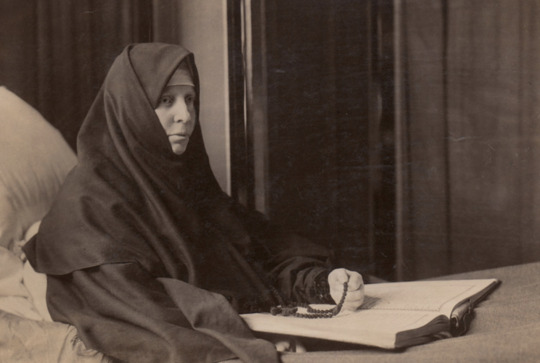
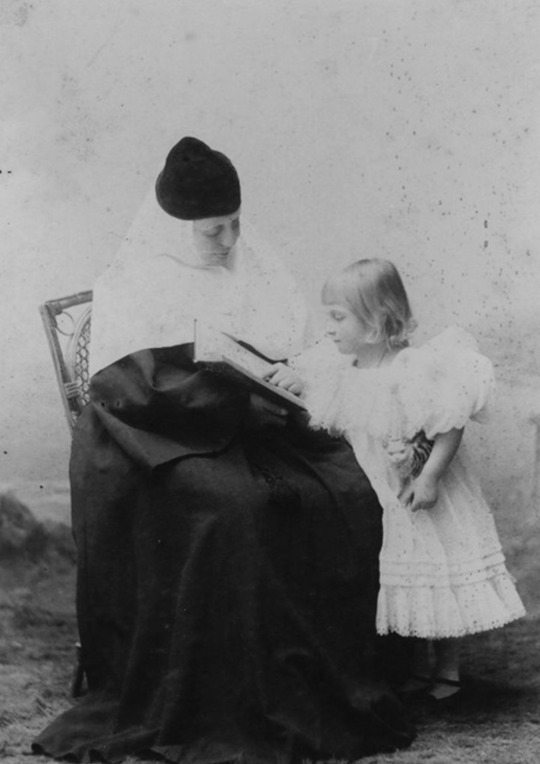
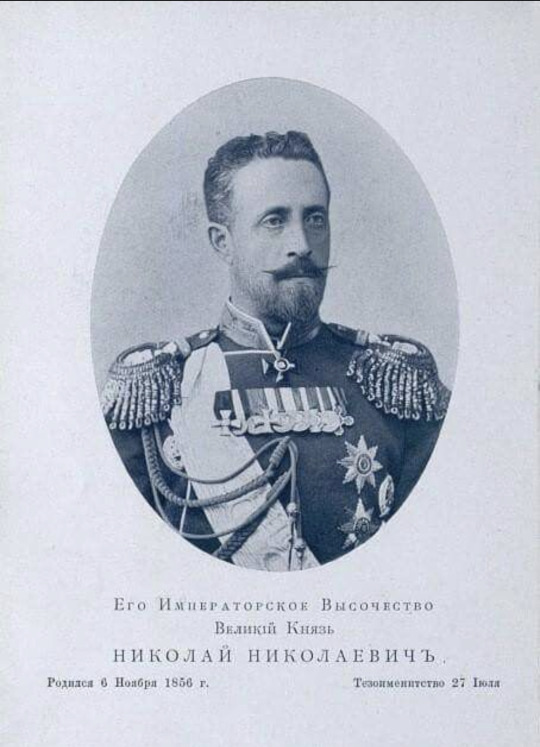

#russian history#imperial russia#romanov dynasty#Grand Duke Nicholas Nikolaievich the elder#Grand Duke Nicholas Nikolaievich#Nikolasha#Grand Duke Pyotr Nikolaeievich#Grand Duchess Alexandra Petrovna
22 notes
·
View notes
Photo

The future Grand Duchess Alexandra Petrovna by Hau.
12 notes
·
View notes
Photo

Grand Duchess Alexandra Petrovna, wife of Grand Duke Nicholas Nikolaevich the Elder. She lived as a nun in later years, spurrned by her unfaithful husband, after she had found little understanding or sympathy from other relatives due to her “ugliness” and inability to dress elegantly so “how can her husband at any different?”
16 notes
·
View notes